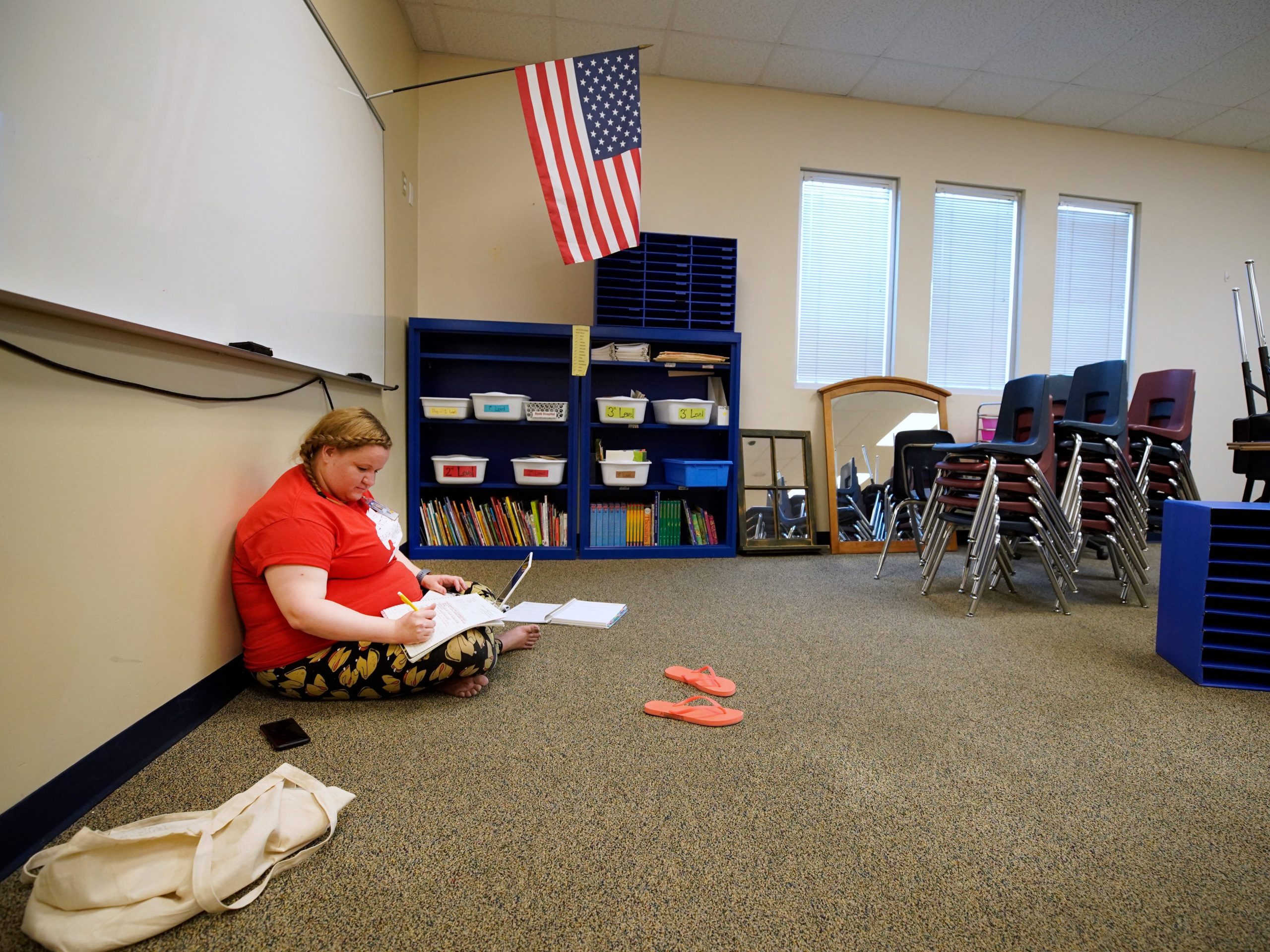
- Researchers at the National Bureau of Economic Research found the gender pay gap between female and male teachers in Wisconsin widened after the state gutted union strength.
- Wisconsin passed a law in 2011 that barred unions from bargaining on behalf of teachers, and instead put the onus of negotiating for higher pay on teachers.
- Without union support, women teachers were less likely to negotiate pay raises than male teachers, NBER found.
- Throughout the country, teacher union membership has declined by about 9% since 1999; white women comprise most of the public school teacher workforce.
- Teachers already make less than the median US income, and many say they work multiple jobs to make ends meet.
- Visit Business Insider’s homepage for more stories.
Decreased union membership may have widened a gender pay gap between male and female teachers in Wisconsin, per a new study from the National Bureau of Economic Research.
The research follows Wisconsin because that state passed a law in 2011 that barred unions from bargaining on behalf of teachers and instead put the onus of negotiating for higher pay on teachers. The measure, called Act 10, also weakened union power by stopping union dues from automatically deducting from member paychecks. It ultimately led to an overall decline in teacher union participation.
Without union support, women teachers were less likely to negotiate pay raises than male teachers, NBER found. Younger female teachers earn 1.4% less than their male counterparts, and older ones earn 0.7% less than men. The researchers said that if the gap persisted over time, “women would lose an entire year’s pay over the course of a 35-year career relative to men.”
One left-leaning think tank found that across the board, median salaries for Wisconsin teachers fell by 2.6% and median benefits by 18.6%, five years after Wisconsin moved to decrease union strength.
Throughout the country, teacher union membership has declined by about 9% since 1999. White women comprise most of the public school teacher workforce: 76% percent of teachers are women and 82% of them identify as white, according to two federal databases.
Teacher pay is one of the weightiest issues facing the American workforce today. The Bureau of Labor Statistics estimates the 2019 median pay for high school teachers was $61,660, with middle and elementary school educators earning about $2,000 less. Pay also varies significantly depending on where the teacher works.
Among all genders, teachers make much less than other jobs that require a college degree. Educators earn approximately 18.7% less than comparable professions, amounting to making less on average in inflation dollars than they did in 1990, per the Department of Education. In 1994, the gap between public school teachers and other jobs that required a college degree was just 1.4%.
Now, one in six teachers say they work multiple jobs and nearly all say they use their own money to pay for school supplies, demonstrating the dire state of the industry. Teachers across the country have pushed back on decreased wages by going on strike and protesting in many states in the last few years, including ahead of school reopenings this year.
Dit artikel is oorspronkelijk verschenen op z24.nl

